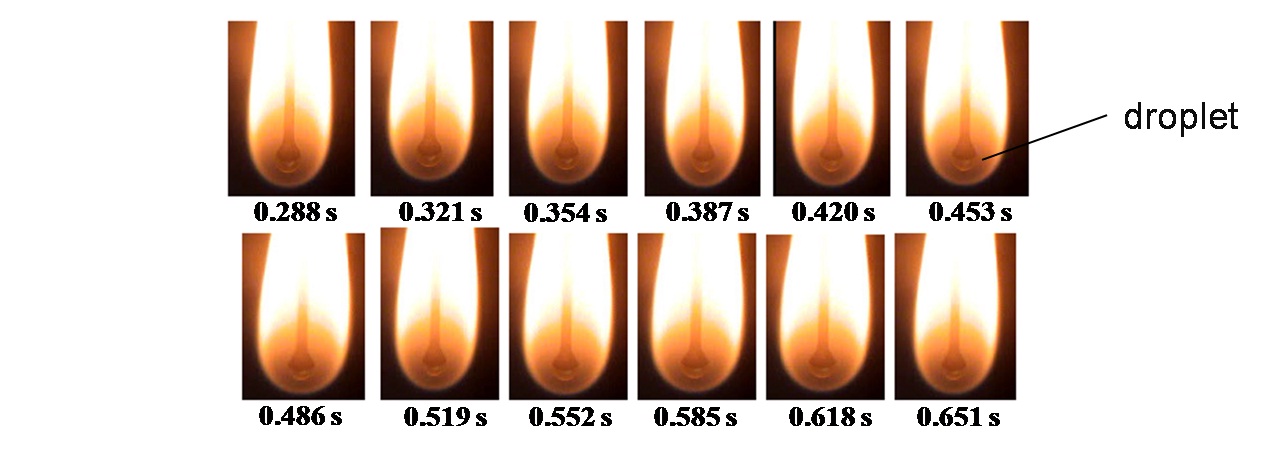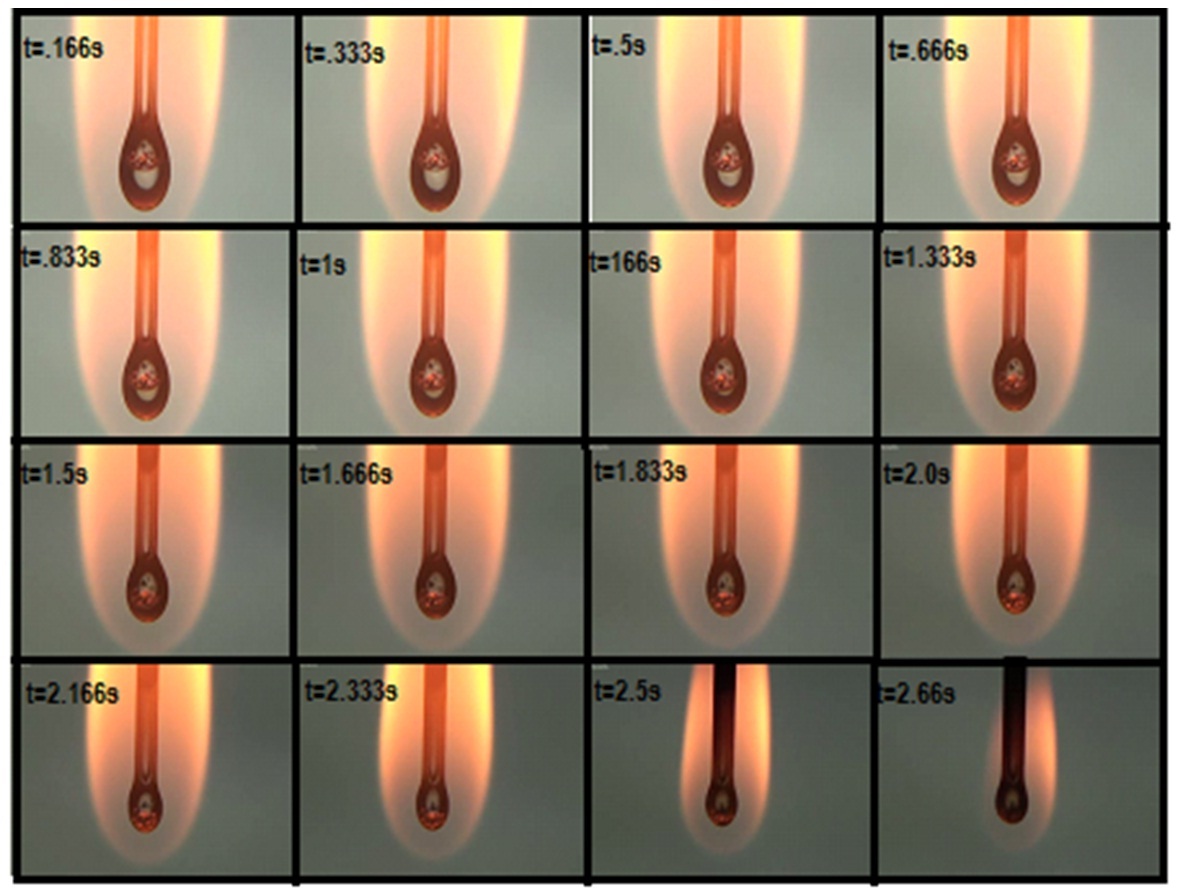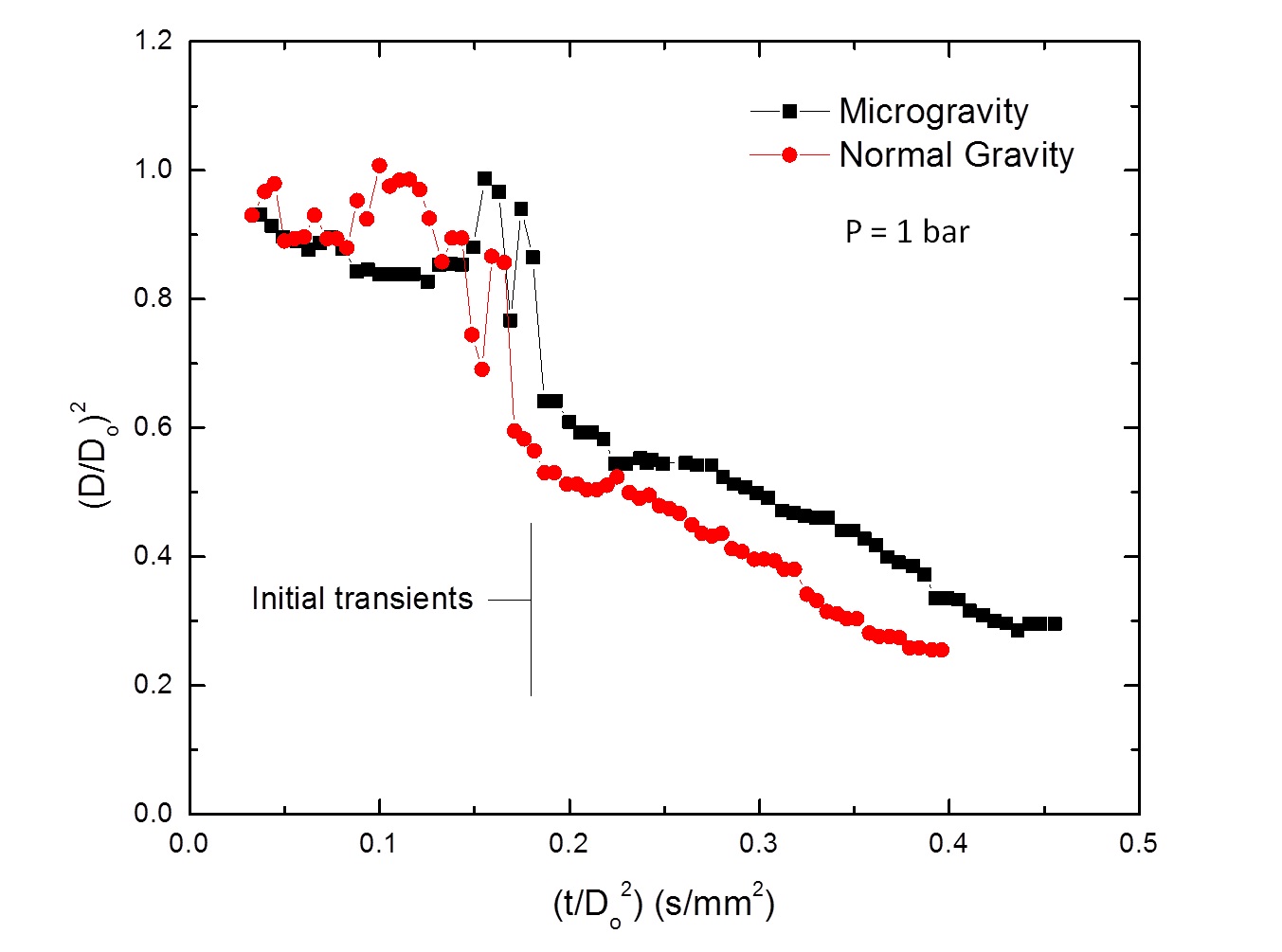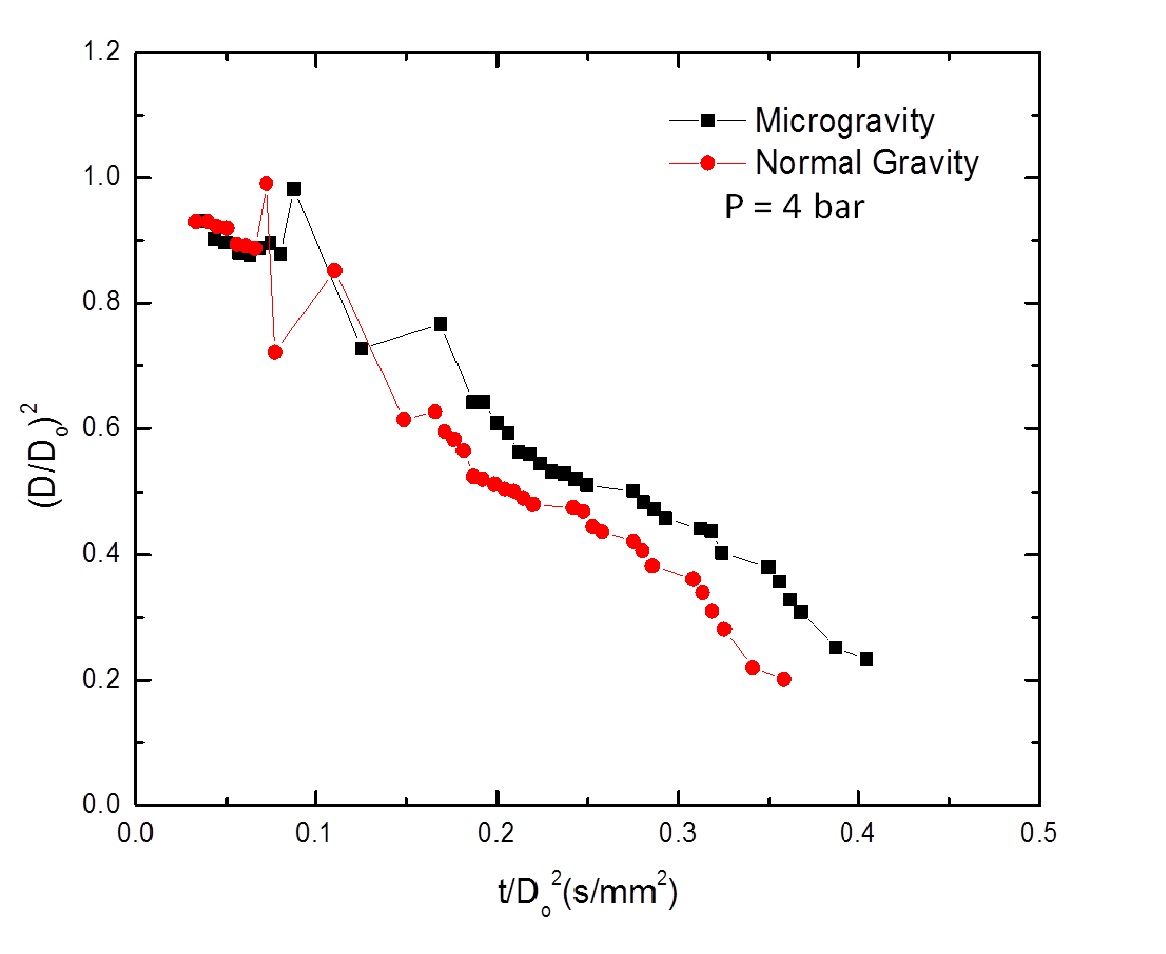Test Conditions
- Gravity Conditions:
- 1g (normal gravity)
- 10-5g (micro gravity)
- Gauge pressure conditions : 1 bar, 4 bar, 8 bar
Luminous images of droplet combustion
Droplet combustion under normal gravity (1g)


- Flame envelopes the suspended droplet
- Elongated flame due to buoyancy
Droplet combustion under micro gravity (10-5g)

- Flame envelopes the droplet
- Lack of buoyancy results in nearly spherical flame
Backlit images of droplet combustion
Backlit images (shown here under 1g) reveal the receding of droplet as the burning progresses.

Effect of gravity on burning rate

- Fluctuations in the regression of droplet diameter are due to initial transients.
- The burning rate of droplet under normal gravity is higher than that of micro gravity.
- Buoyancy under normal gravity results in increased motion of fuel vapors inside the droplet. Thus, heat transfer inside and transport of fuel vapors to the flame front is enhanced and burning rate increases consequently.
Effect of pressure on burning rate


- Normal gravity droplet burning exhibits higher burning rate compared to the microgravity case due to buoyancy effects as seen in the ambient pressure case. Similar trends are observed at higher pressures of 4 and 8 bar in the above figures.
- Burning rate of droplet increases with chamber pressure due to enhanced vaporization rates and reaction rates. In case of normal gravity, increased buoyancy at higher pressure also causes enhancement in the burning rate.
D2 law


- Straight lines corresponding to the form of D2 law are fitted to obtain the D2 law parameters.
- Magnitude of burning rate constant for microgravity is smaller than normal gravity, indicating that droplet burns faster in normal gravity condition as observed from the burning rate curves at 1, 4, and 8 bar and table above.
- Increase in the burning rates with pressure at both normal and micro gravity is exhibited by an increase in the burning rate constant.










